Florida Currents

PEACE RIVER ELECTRIC COOPERATIVE
JULY 2024




Read more on page 25.














PEACE RIVER ELECTRIC COOPERATIVE
JULY 2024




Read more on page 25.












July 2024 • Volume 13, No. 9
CEO Michael Shepard
VICE PRESIDENT OF CONTENT Leon Espinoza
EDITORIAL DIRECTOR Mike Teegarden, CCC
DEPUTY EDITORIAL DIRECTOR
Noble Sprayberry
SENIOR EDITOR Jennifer Paton, CCC
FLORIDA CURRENTS EDITORS
Chasity Anderson, CCC; Valeri Pearon
ASSISTANT EDITORS Victoria Hampton, CCC; David Herder, CCC
ASSOCIATE EDITOR
Nina Todea
PUBLICATIONS PRODUCTION
SENIOR MANAGER
Elizabeth Beatty
PUBLICATIONS COORDINATOR
Alyssa McDougle
Members acknowledge that $4.31 a year, plus postage, is the cost to publish 12 issues a year of FLORIDA CURRENTS ISSN 23276304 (USPS 8300). Published by Pioneer Utility Resources Inc., 5625 NE Elam Young Pkwy. Ste. 100, Hillsboro, OR 97124—a not-for-profit Oregon cooperative corporation—the magazine serves the communication needs of consumerowned electric utilities in Florida. Preferred Periodicals postage paid at Hillsboro, OR 97123 and at additional mailing offices.
Postmaster: Send address changes to 5625 NE Elam Young Pkwy., Ste. 100, Hillsboro, OR 97124-6422.
HOW TO CONTACT FLORIDA CURRENTS
Subscription services:
Nonmember subscriptions $15 U.S. a year; $25 foreign a year. Prepayment required. Allow 4-8 weeks for first issue. Identify local edition desired. Have a problem receiving your magazine? Utility members should contact their utility office. Nonmembers call 503-357-2105 or email mailingdept@pioneer.coop.
Back issues:
Back issues and extra copies are $3 each, prepayment required. Supply is limited. Identify edition, month and year. Call first to check availability. Contact Pioneer Utility Resources: P.O. Box 1306, North Plains, OR 97133-1306; 503-357-2105; email: mailingdept@pioneer.coop.
DISPLAY ADVERTISING INQUIRIES
American MainStreet Publications 611 S. Congress Ave. Ste. 504 Austin, TX 78704-1714; 800-626-1181 or 512-441-5200; amp.coop.
© 2024 Pioneer Utility Resources. All rights reserved. Reproduction in whole or in part without written permission is prohibited. Direct reprint requests to editor@floridacurrents.com or for more information, visit www.pioneer.coop.

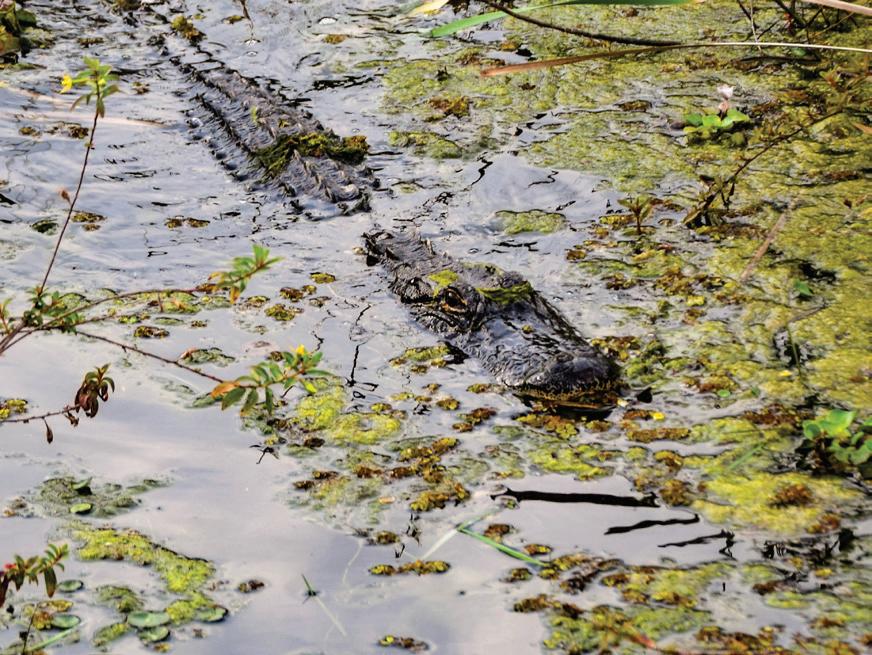

Peace River Electric Cooperative’s charitable foundation recently selected 32 students to share $106,000 in college scholarships. During the past 19 years, Operation Round Up has provided more than $1.3 million in scholarships to 289 PRECO members or their dependents.
“It is both a privilege and honor for our Operation Round Up board to be able to provide opportunities to allow for the future growth and development of our students,” says new Operation Round Up board
Chair Richard Illch. “As the Operation Round Up program is fully funded by the generosity of our members, it is you—our members—who ultimately contribute to our community and thereby provide a monetary incentive to our students pursuing their future dreams with a higher education. As Winston Churchill once said, ‘We make a living by what we get. We make a life by what we give.’” n













































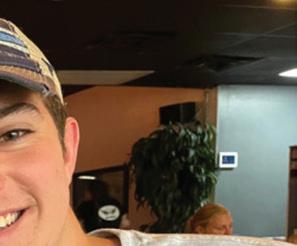




















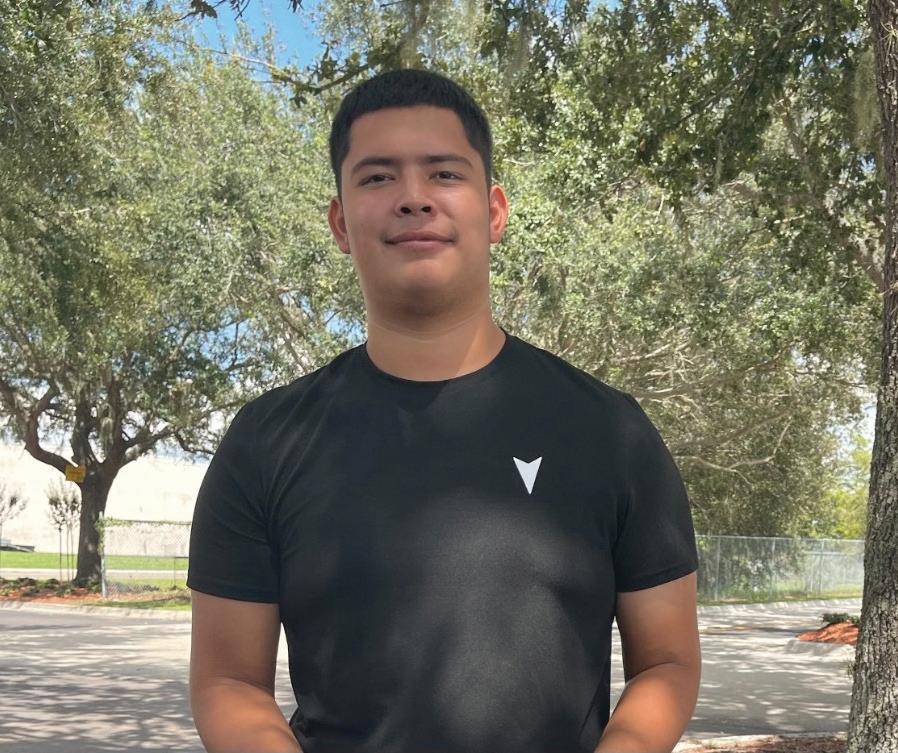















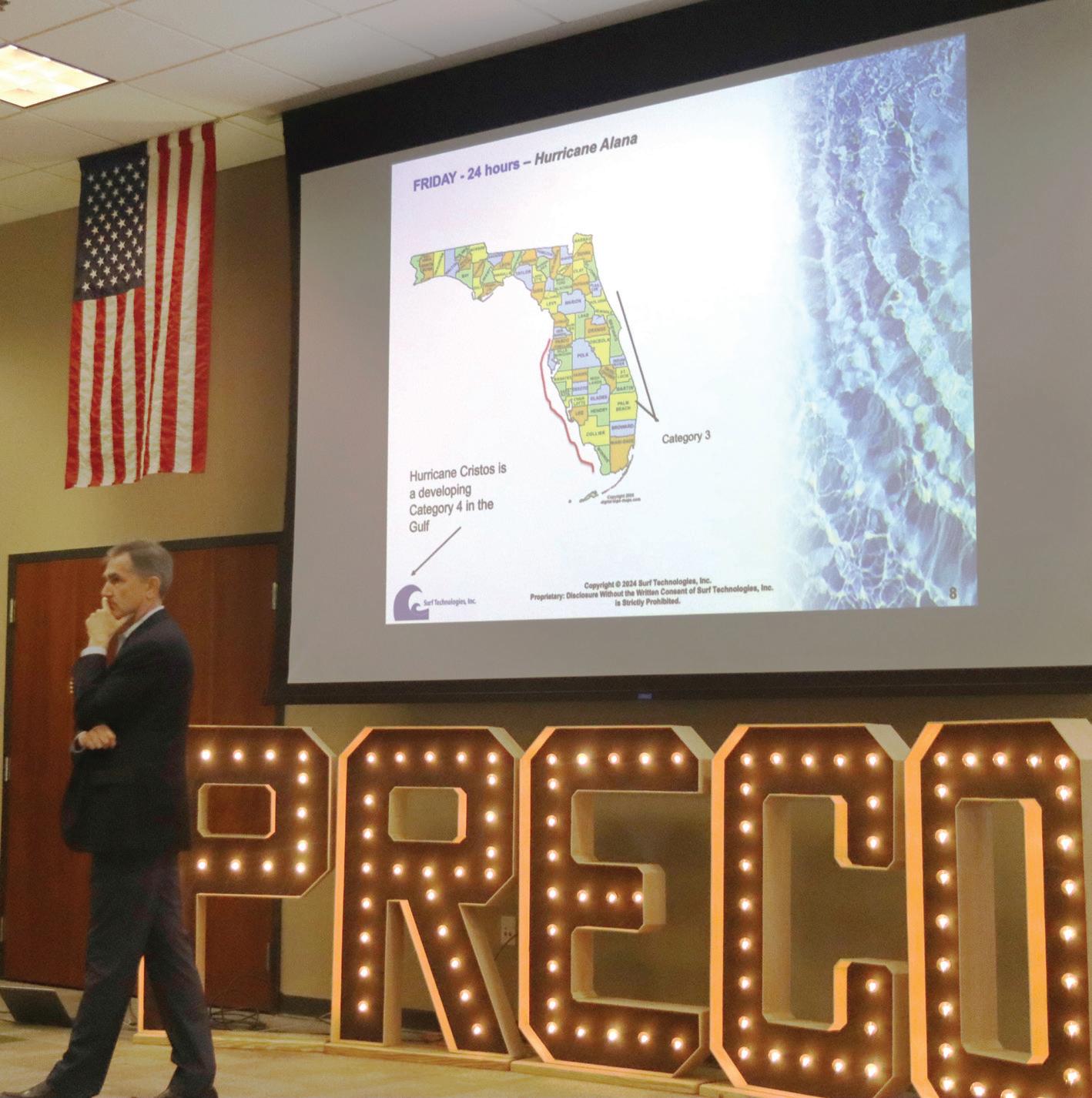


CLOCKWISE FROM TOP LEFT: PRECO employees participate in a tabletop exercise for the Emergency Response Plan, ensuring they’re prepared to handle any situation. Jacques Davignon, president of Surf Technologies Inc., led PRECO employees through exercises that tested each department’s strengths and weaknesses in the event of a crisis. Vice President of Operations Van Crawford, front, and Vice President of Engineering Paul Roberts analyze a critical scenario during the exercise.
PRECO demonstrates unwavering commitment to safety and readiness with annual emergency response drills
By Claire Thomas
Safety is the top priority at Peace River Electric Cooperative, which is why the Emergency Response Plan review is conducted annually under blue skies.
Recently, the PRECO team gathered to review and refine emergency procedures, ensuring we’re always prepared to handle any situation that may arise. From severe weather
events to cybersecurity threats, no stone is left unturned in our commitment to keeping our communities safe and powered up.
The Emergency Response Plan isn’t just a document—it’s a living, breathing roadmap guiding the co-op through every step, from preparedness to response and recovery. By conducting drills under optimal conditions, strategies are fine-tuned to ensure seamless coordination when it matters most.

Try the world’s most tender steaks, extra-aged 28+ days to perfection. Discover premium quality beef that’s grain-finished for exquisite flavor.
the juiciest air-chilled chicken, tastiest pork, and so much more.













Despite more than a million alligators calling Florida home, encountering the predators in a city’s business district is a rarity—and residents openly embracing their presence is even more unexpected. Yet in Inverness, the county seat of Citrus County, the waters and marshes of Cooter Pond harbor an abundance of scaly reptiles that coexist with local humans.
Just a few yards from the sheriff’s office and across from the local McDonald’s and Family Dollar Store, this wildlife sanctuary adds charm to the urban landscape. Alligators 4-to-7-feet long freely roam Cooter Pond Park and may be seen from a quarter-mile-long elevated boardwalk built in the early 2000s spanning the southeastern side of the 25-acre pond.
“The boardwalk has been a huge
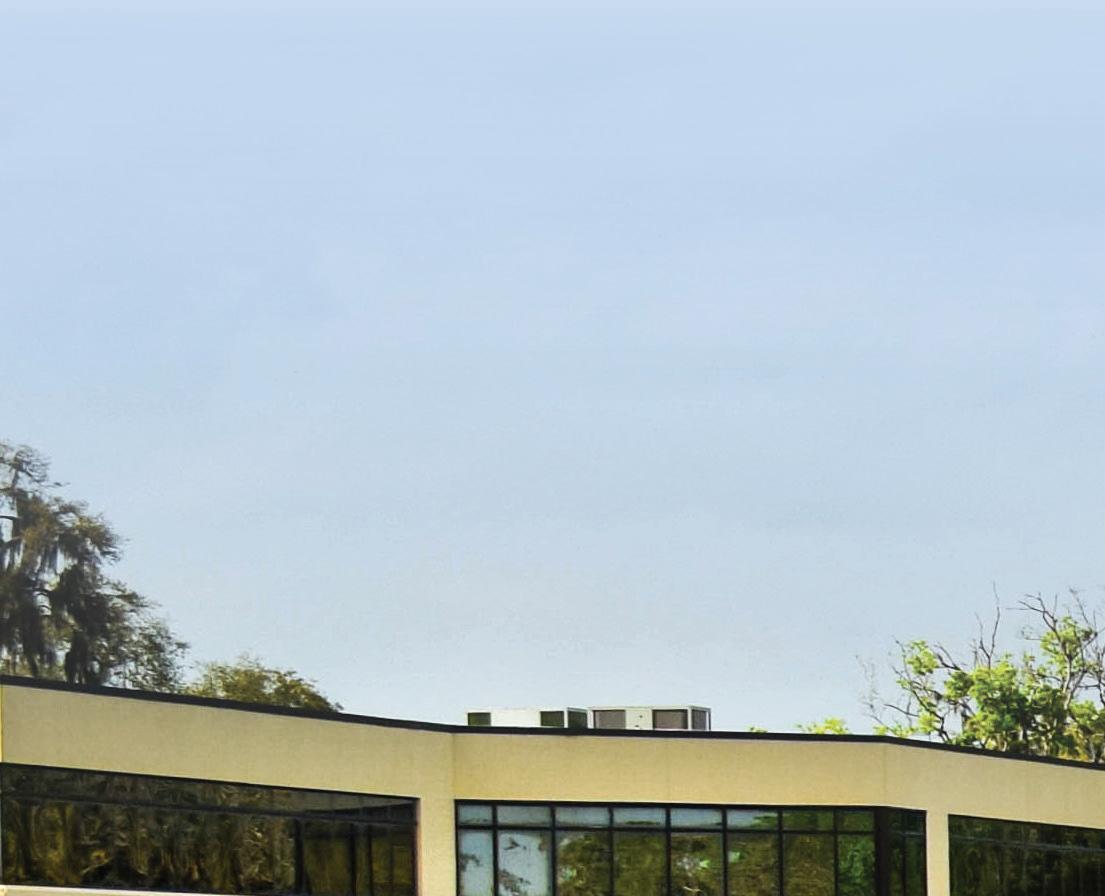


benefit in attracting tourists to Inverness,” says Ken Marotte, a retired cybersecurity specialist and Citrus County Historical Society member. “It allows people to view and interact with nature in the pond in a safe and controlled manner.”
Originally an open cove joining the much larger 422-acre Henderson Lake to the north, Cooter Pond’s eastern bank was filled in during the early 1900s to create the landlocked pond. This enabled the regional Atlantic Coast Line railroad to relocate track along the new embankment, avoiding a sharp curve on the western shore.
“I found a map that showed the ACL line traveling on the new path in the 1920s,” Ken says.
Today, that stretch includes part of the 47-mile Withlacoochee State Trail, one of Florida’s longest paved rail trails.
In addition to the free-range alligators, waterfowl—including egrets and colorful
common moorhens—are regular pond visitors. They feed among thriving aquatic plants like duckweed, cattail and spatterdock. Plant growth can be so rapid in the warm, nutrient-rich water, an ecofriendly aquatic weed harvester sits by an entrance to periodically battle the flora encroachment from species, such as water hyacinth, which threaten to choke the water.
“It’s an invasive plant that reproduces at an impressive pace,” Ken says. “Not only does it block sunlight at the surface level, but as the old plants die, they form a thick level of sediment on the bottom.”
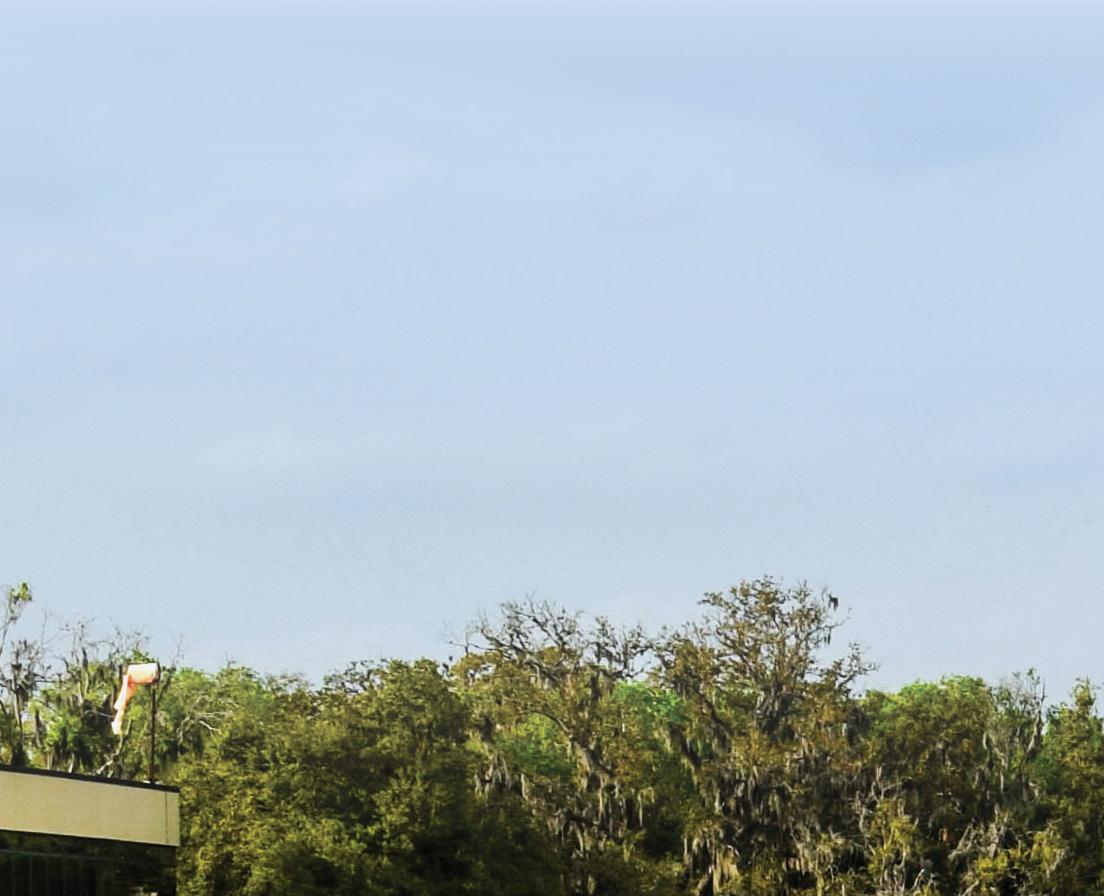
Contamination of Cooter Pond water proved challenging over the years. At one time, even human waste flowed into the water from the town septic system. Ken says that even after the city upgraded its sanitary facilities, overflow sewage was still pumped into the pond.
“The opening of a new shopping center

BACKGROUND:











in the 1970s, where the current WinnDixie is located, created a new challenge since their runoff flowed into the pond as well,” he says. “The situation was rectified when Inverness stopped using the pond for that purpose.”
Decaying plants and untreated stormwater runoff clouded the pond with organic sludge. In the 1980s, plans to beautify the downtown business district included Cooter Pond and the surrounding area. Stormwater was routed away from the pond, the boardwalk was constructed and a striking decorative fountain was added to provide water aeration. Since 2002, the floating mechanical harvester—which the Tampa Bay Times called “a giant underwater lawnmower”—has helped keep plant growth in check.

“The boat moves along the surface and


cuts or funnels plants into the holding area,” Ken says. “The plants are then removed from the boat and destroyed. The pond has had its share of ups and downs over the years and gone from the polluted Rodney Dangerfield of local water bodies—that is, got no respect—to a gem offering inspiring views of nature.”
Now a source of local pride, Cooter Pond Park is a center of Inverness activities. The Citrus County Historical Society even offers children’s programs.
“One of those sessions is called the Turtle Walk, where the children are led across the boardwalk as part of a guided tour and encouraged to find as many resources on their checklist as they can,” Ken says.
While unaware of alligator attacks in the pond area, he still advises, “I would not be inclined to walk close to the banks of the pond.”
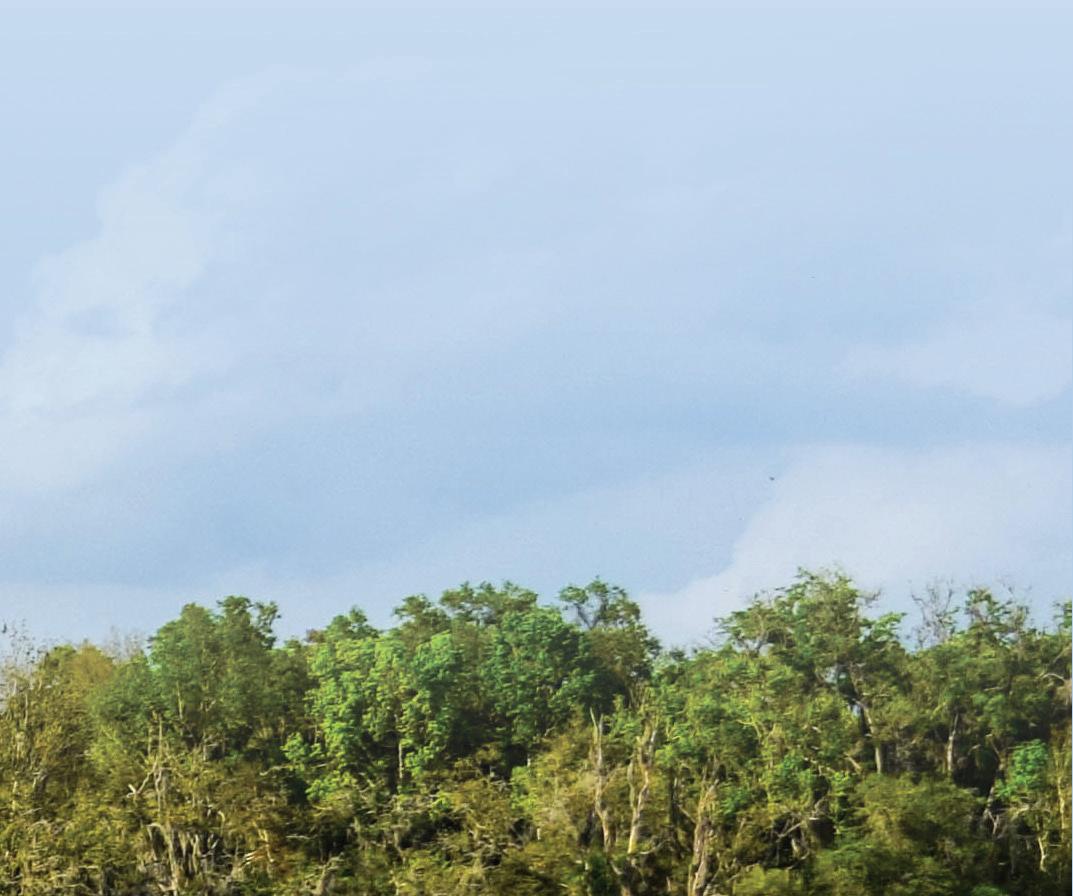


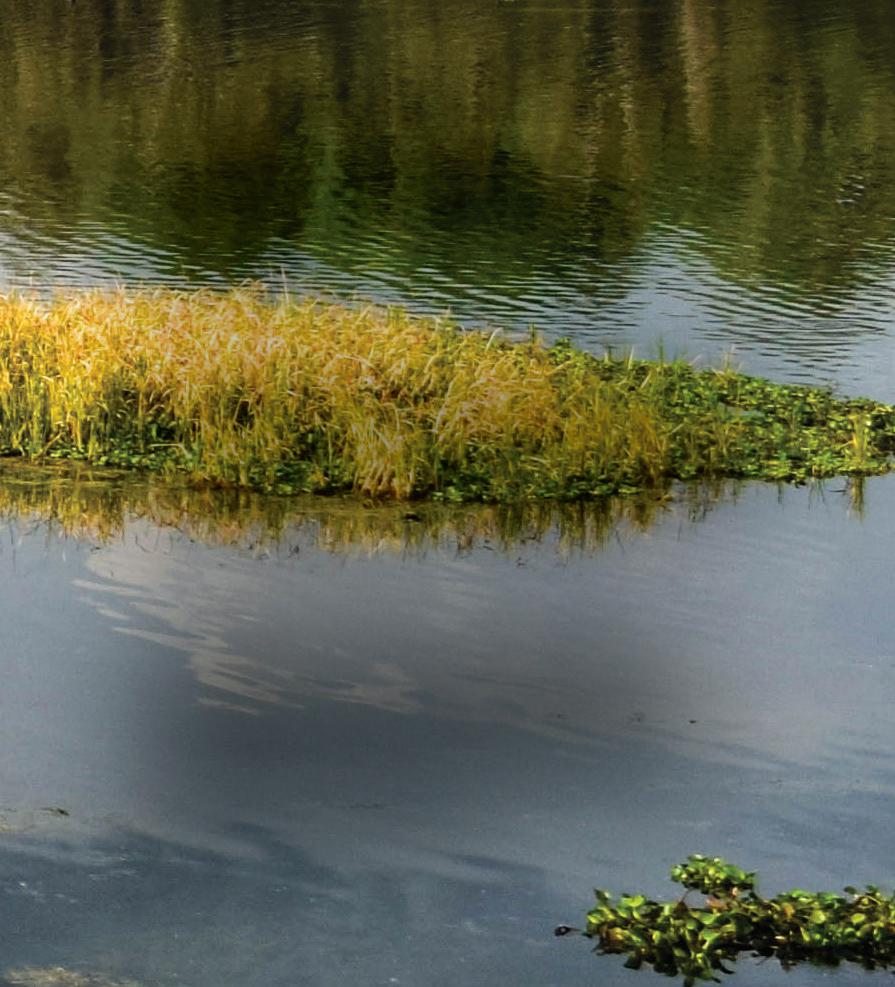

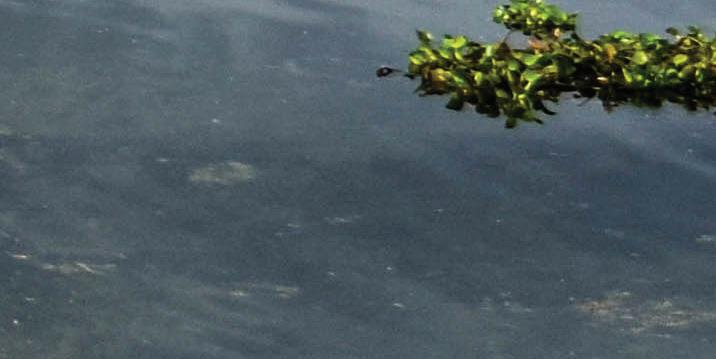
Is Cooter Pond named after a turtle?
True. Seen gracefully swimming through the pond water or basking in the sun on its banks, the docile Florida Cooter grows up to 12 inches and sports a yellow or orange shell pattern on a dark background.
Is Inverness named after a Scottish town?
That is probably true, but who first suggested the name has been open to speculation for many years. Ken Marotte of the Citrus County Historical Society says the name dates from the late 1800s and “a preponderance of evidence points to the Florida Orange Canal & Transit Company—specifically Director/Secretary Alexander B. Campbell—as the most likely source.” His parents were Scottish, with maternal ancestors coming from Inverness, Scotland, where Campbell was known to visit.
Is there a 1930s train wreck at the bottom of Cooter Pond?
Probably false. For some five decades, stories have circulated suggesting several railroad cars rested on the bottom of Cooter Pond from an earlier derailment. None have been found to date.
“I view this story as another fascinating legend in Citrus County history,” Ken says. “The turtles know the real story— and they aren’t talking.”




By Theresa Sterling


Florida’s wild beauty has always inspired, captivated and attracted artists. Orange sherbet sunsets, dark forests dappled with pops of bright blooms and coasts where liquid emerald meets sugar-white sand have long been the focus of the artistic eye.
Those who have seen works by the Florida Highwaymen landscape artists or heard English composer Frederick Delius’ 1887 “Florida Suite” understand. Delius composed his orchestral work three years after his unforgettable time in Florida managing his family’s orange groves by the St. John’s River. Though the composer’s time in the Sunshine State was brief, the magic of the landscape and culture lingered into his old age.
If there is a common theme among creatives who attempt to capture the essence of rural Florida, it is a combination of awe over the state's unique beauty and concern for preservation of natural spaces and history.
Following a historic painting tradition, High Springs artist Karen LeMonnier is a plein-air artist, painting on location and outdoors. She is usually the first to put brush to canvas during outdoor “paint out” events or when gathering with colleagues, rushing to capture the changing morning light.
“I set up and jump in—I don’t do a lot of prelims,” she says, referring to sketches and small studies some artists do before deciding the final composition of a scene. “I do take photos to help me finish a piece in the studio, but I do 90% of a painting plein-air.”

French for “open air,” plein-air painting dates to early-1800s Britain. It was the hallmark of impressionism by around 1860 and boomed in popularity a decade later when oil paint became available premixed in tubes. Plein-air painting has always been physically demanding, with 19th-century artists lugging boxes of pigments, canvases, wooden easels and other supplies with human or animal assistance in the days before automobiles.
“It still is demanding now,” Karen says. “Some painters don’t like working outside because there are too many variables, and it is physically exhausting. But it’s what I love to do.”
Karen focuses on Florida’s natural beauty and historic architecture. Her favorite location is Blue Springs at Ruth B. Kirby Gilchrist Blue Springs State Park—roughly one-third of her paintings feature the spot. Her paintings’ Prussian-blue depths,



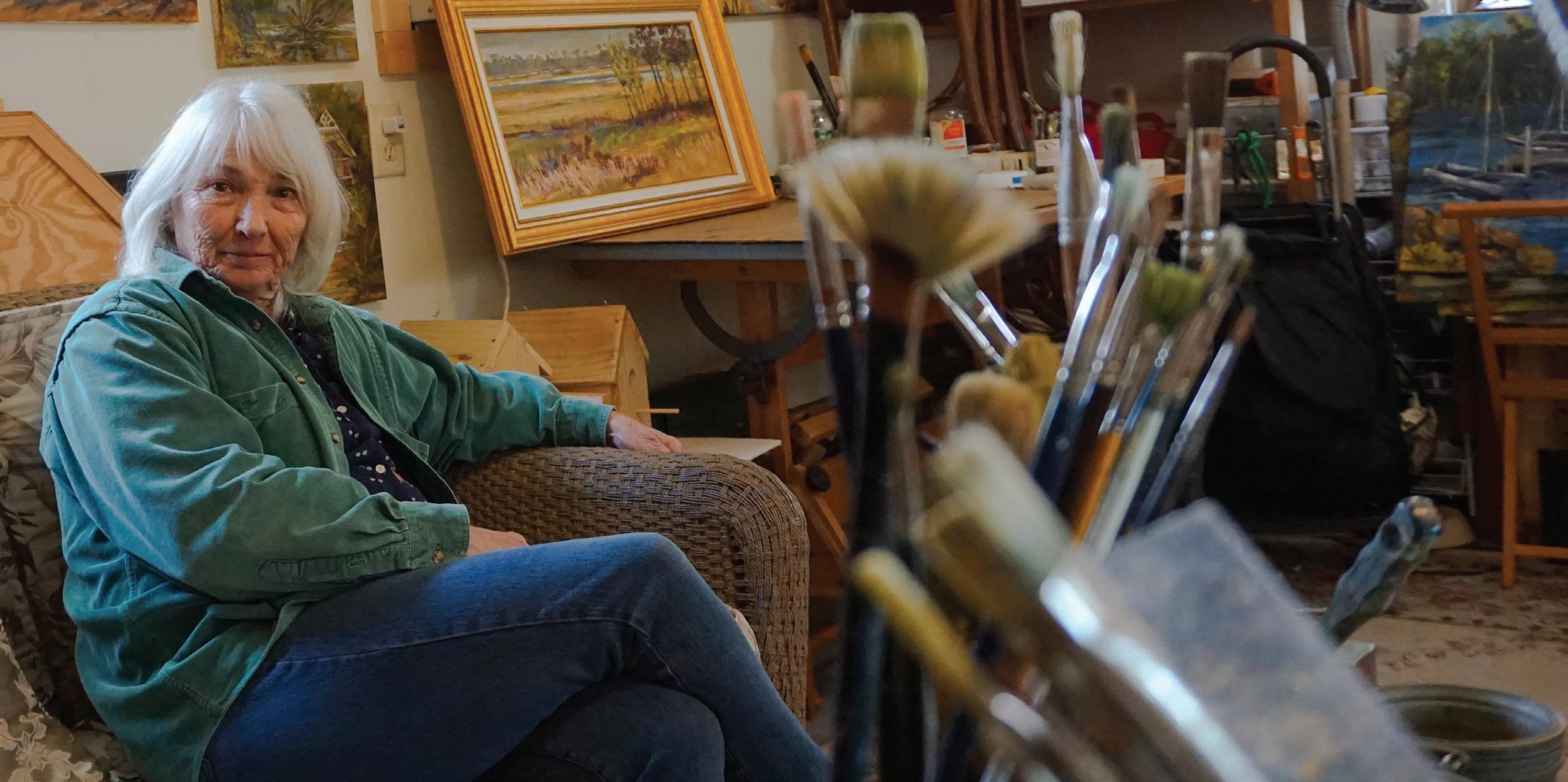



horizon lines of cypress knees, water oaks and golden grass marshes convey an intimate understanding of the natural surroundings only possible through close observation.
The springs are near the historic High Springs home Karen shares with her husband, Larry. They met at the Ringling School of Art in Sarasota in 1968 and celebrate 53 years of marriage this year. They chose High Springs for their home because of its rural backdrop and the easy drive to places that inspire Karen’s painting, including Cedar Key, St.




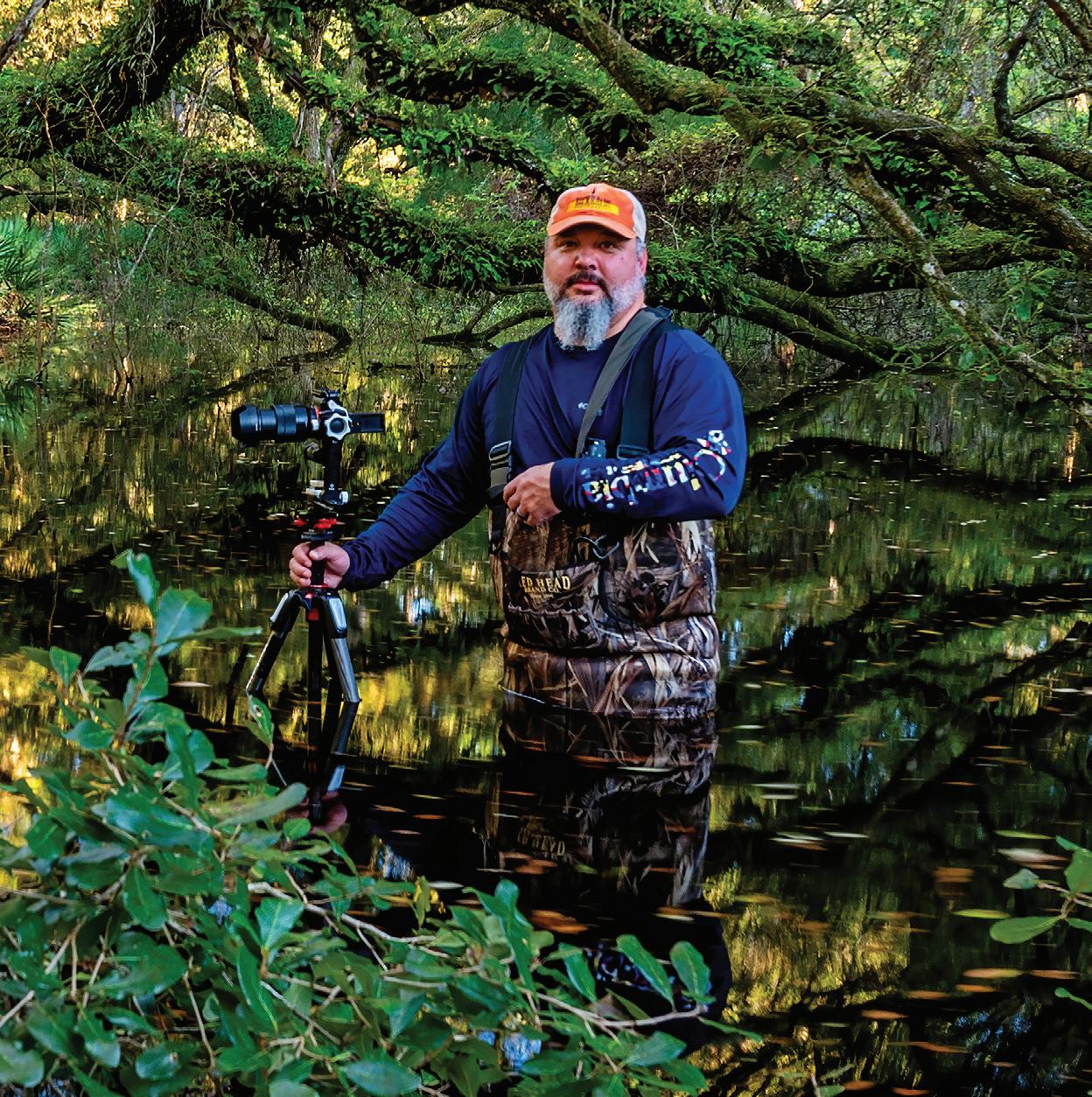
Augustine, Paynes Prairie and Evinston.
She paints four or five days a week, and studio time is spent finishing off work she started outdoors. An award-winning painter, her work is shown in galleries in High Springs and Gainesville and at culminating plein-air receptions where paintings are often hung while still wet.
“I Iike to work instinctively, and I love to paint outdoors,” Karen says. “We are in the heart of gold here in Florida, with our springs and rivers. I can’t go to Blue Springs without getting inspired. I can’t not paint here. It’s like magic.”

The images captured by photographer Jimmy Daniels, mostly around North Florida, bring history to the forefront in captivating ways—an abandoned plantation home, a tree canopy above clay road banks, a half-sunken oyster boat battered by the Gulf Coast sun.
“There are no more old oyster boats around," Jimmy says. "At one time, Apalachicola Bay provided almost all of America’s oysters. Rural America is being lost, culture is changing in front of our eyes, and people aren’t seeing it. It’s important to remember what we had.”
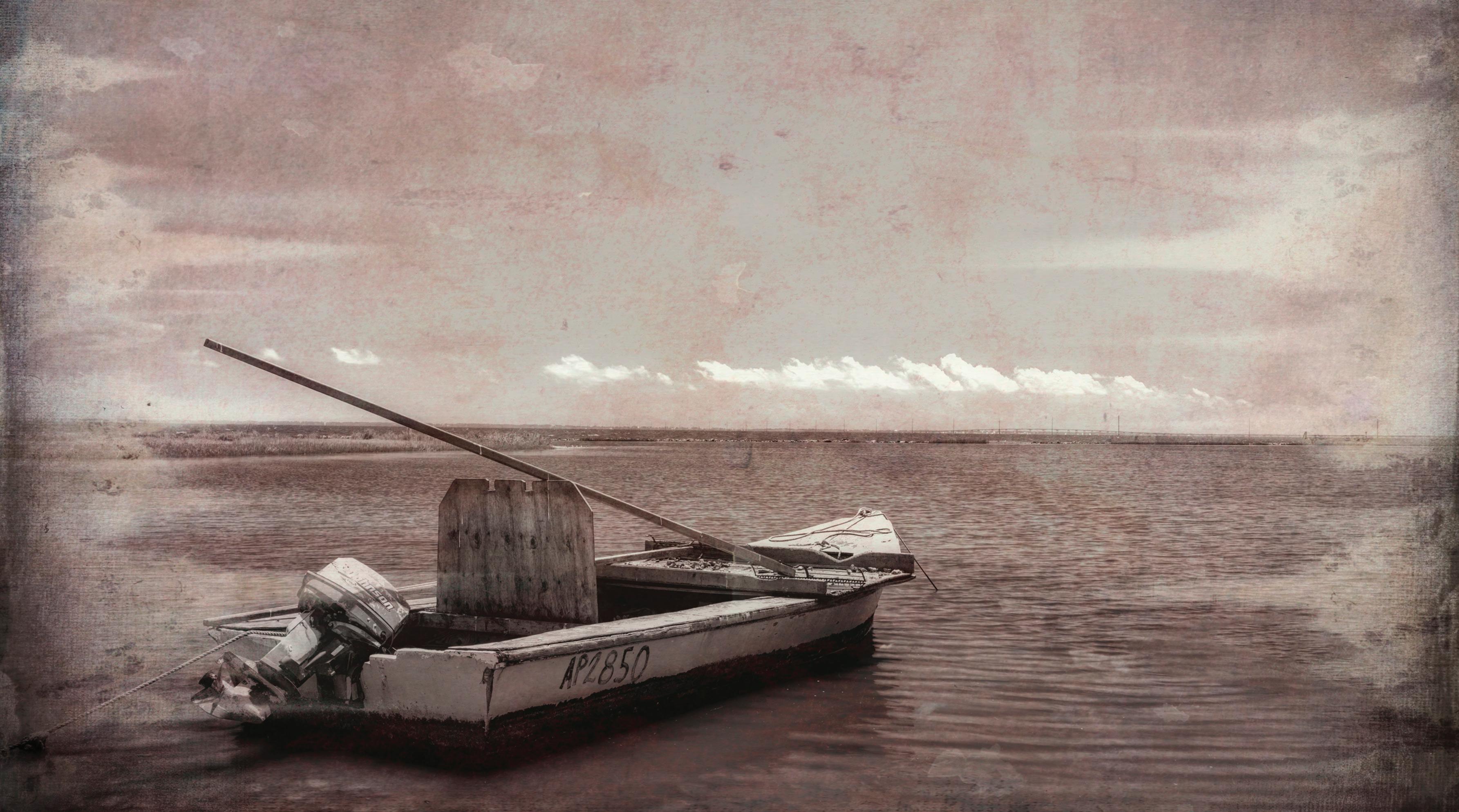
Rural Florida has always drawn Jimmy. The Panhandle’s coastal areas juxtapose unique features—old plantations, rustic fishing villages and working farms. There is so much in this place where Jimmy grew up that he wants to share.
“Some places in America just don’t have what we have in North Florida,” he says. “I want to see wilderness and nature, and I want others to see it, too.”
Jimmy has taught workshops, shown his work in galleries and won several awards, including from arts organizations such as LeMoyne Arts in Tallahassee and the Florida Council on Culture & Arts. The accolades, while appreciated, do not outshine his mission of wanting viewers to feel a scene.
“I spend 20 minutes tops on postediting per photo,” Jimmy says. “I don’t want my images to look overcooked, and I stay true to single exposures except in rare situations, such as panoramic photos or an occasional overlay of two images. I want a true picture. That’s the best outcome.”

Rural America is being lost, culture is changing in front of our eyes, and people aren’t seeing it. It’s important to remember what we had.”
—Jimmy Daniels, photographer


His focus has not changed, even though his work as a travel nurse has taken him away from Florida. He rides back roads for inspiration wherever he’s working. The area looks very different now, but when he comes home, he always brings his camera and heads straight out to St. George Island or Apalachicola.
Linda Blondheim has many titles: Certified upland and wetlands naturalist. Landowner. Arts educator. Conservationist. Nonprofit volunteer. Nature lover. Artist.
The Alachua County native lives on family land, tucked into the northern part of the county—a stark contrast to the city center, home to the University of Florida. Her studio backs up to woods behind her home, oil paintings stretching from floor to ceiling.
“I have been around wild and natural old Florida for a long time—forever,” Linda says. “I wouldn’t trade my rural existence for anything.”
Linda paints natural subjects, the Florida light captured in palms, prairies and citrus, which occupy that indelible place in Florida’s memory.
“As a naturalist and a painter, wildlife and land stewardship are very important to me,” she says. “Stewardship is all we have. We don’t own the land.”

Linda says she is a better studio than plein-air painter, and she paints every morning and late afternoon. She drives along back roads and takes photos to inform her work in the studio.

“I am always looking, looking, looking," she says. "Even when I have a private artist residency, mostly I just look,” she says.
Linda’s talent emerged early. At age 8, she took drawing classes with a group of friends. At 13, her parents bought her an adult easel and a set of oil paints. She raided her mother’s kitchen for still-life subjects—eggs, peppers, fruit—and stole upstairs to her attic bedroom-studio to paint. She earned her Bachelor of Fine Arts at the University of Tampa and her Master of Fine Arts from the University of South Florida.
Linda’s art is part of her work trying to preserve Florida’s natural resources. She volunteers with the Fair Oaks Foundation, a nonprofit committed to “encouraging the Florida culture of arts, music and agriculture.” She helps organize fundraising events, such as the annual Summer Solstice Soirée, highlighting a few select Florida artists each June. As a Certified Master Naturalist, Linda guides individuals and groups interested in making good decisions for conservation.
“Every day, I wake up and think, ‘Oh my gosh. How lucky I am to have this in my life?’” Linda says. “Every piece I have painted is always about a place that is important to me or to the person I am painting it for.”
To find out more about Karen’s art, visit www.karenlemonnier.com. More of Jimmy’s photos can be found at backroadsphotographyllc.com. Linda’s art can be found at www.lindablondheim.com.







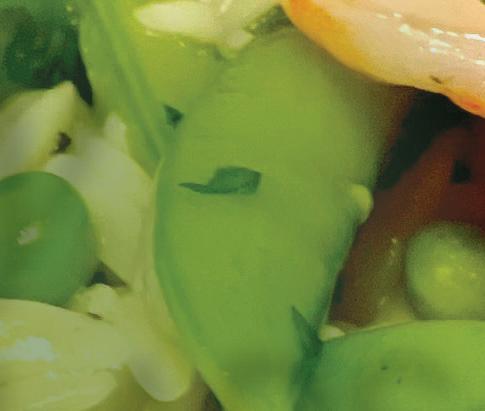




Orzo Salad With Shrimp and Lemon Dressing
¼ cup extra-virgin olive oil
1 teaspoon lemon zest
3 tablespoons fresh lemon juice
1½ teaspoons kosher salt
½ teaspoon black pepper
1 cup uncooked orzo
8 ounces fresh asparagus, trimmed and diagonally sliced into 1-inch pieces
4 ounces fresh sugar snap peas, trimmed
1 cup fresh or frozen English peas, thawed if frozen
12 ounces medium raw shrimp, peeled and deveined
¼ cup coarsely chopped fresh chives
¼ cup coarsely chopped fresh flat-leaf parsley
Whisk together oil, zest, juice, salt and pepper in a small bowl. Set aside. Prepare orzo according to package directions, omitting salt and fat. Drain. Transfer orzo to a bowl. Cool to room temperature, about 10 minutes. While orzo cooks, bring a large saucepan of water to boil over high heat. Add asparagus and sugar snap peas to boiling water. Cook until bright green and tender-crisp, about 2 minutes. Add English peas. Stir until softened, about 30 seconds. Using a slotted spoon, transfer vegetables to an ice bath, reserving boiling water in saucepan. Add shrimp to boiling water. Cook until opaque, about 3 minutes. Drain. Transfer shrimp to ice bath with vegetables. Let stand until chilled, about 3 minutes. Drain. Toss together shrimp-vegetable mixture with orzo, and drizzle with dressing. Add chives and parsley. Toss to combine. Serve at room temperature or chilled.


Salad
¼ cup slivered almonds
6 to 8 cups mixed butter lettuce
3 small ripe peaches, sliced
Dressing
1½ tablespoons white balsamic vinegar
1 tablespoon Dijon mustard
1 tablespoon maple syrup
½ red onion, thinly sliced
½ cup canned corn, drained
4 ounces soft goat cheese, crumbled
¼ cup olive oil
¼ teaspoon kosher salt
Fresh ground black pepper
Place the almonds in a dry skillet over medium heat. Heat, shaking the pan and stirring often with a wooden spoon, until the nuts are fragrant and golden brown, about 4 to 5 minutes. Remove immediately from the heat and transfer to a plate.
To make the dressing: In a small bowl, whisk together the balsamic vinegar, mustard, maple syrup, olive oil, kosher salt and several grinds of fresh ground black pepper until thick and emulsified.
To serve, top the greens with almonds, peaches, red onion, corn and goat cheese. Drizzle with dressing. Serve immediately.
Dressing
1 ripe avocado, pitted and peeled
¼ cup red wine vinegar
2 tablespoons fresh lime juice
2 tablespoons chopped fresh cilantro
Salad
2 heads romaine lettuce, chopped
15-ounce can black beans, drained and rinsed
1½ cups grape tomatoes, cut in half
1 orange bell pepper, seeded and chopped
1 cup frozen corn, thawed
½ jalapeno, seeded and coarsely chopped
1 clove garlic, coarsely chopped
½ teaspoon kosher salt
½ teaspoon ground black pepper
½ cup olive oil
1 cup shredded pepper jack cheese
4 green onions, sliced
½ cup chopped fresh cilantro
1 ripe avocado, peeled, pitted and cubed
½ cup crushed tortilla chips or strips
To make the dressing, add the avocado, red wine vinegar, lime juice, cilantro, jalapeno, garlic, salt and pepper to a food processor. Blend or pulse until almost smooth. There should still be bits of cilantro. Add the oil. Blend until incorporated.
To make the salad, add the lettuce, black beans, tomatoes, bell pepper, corn, cheese, green onions, cilantro, avocado and tortilla chips to a large bowl. Drizzle with the dressing, and toss to combine. Serve immediately.
24 ounces baby red potatoes, scrubbed and halved
10 cups water
1 tablespoon plus ½ teaspoon kosher salt, divided
4 thick-cut bacon slices, chopped
½ cup sour cream
½ cup mayonnaise
1½ tablespoons chopped fresh chives
1 tablespoon chopped fresh flat-leaf parsley
1½ teaspoons fresh dill
1 teaspoon fresh lemon juice
¼ teaspoon grated garlic
¼ teaspoon black pepper
4 ounces mild cheddar cheese, shredded
Place potatoes, water and 1 tablespoon salt in a large pot. Cover pot and bring to a boil over high heat. Uncover pot and reduce heat to medium-high to maintain a moderate boil. Cook, stirring occasionally, until potatoes are fork-tender, about 12 minutes. Drain potatoes. Cool for 20 minutes.
While potatoes boil, cook bacon in a nonstick skillet over medium, stirring often until crisp, about 9 minutes. Remove from heat. Transfer bacon to a paper towel-lined plate. Set aside until ready to use.
In a medium bowl, whisk together sour cream, mayonnaise, chives, parsley, dill, lemon juice, garlic, black pepper and ½ teaspoon salt.
Add sour cream mixture, bacon and cheese to cooled potatoes in bowl. Toss to combine. Serve immediately, or cover and store in the refrigerator for up to 12 hours.
1 cucumber, unpeeled, seeded and sliced ¼-inch thick
1 red bell pepper, large-diced
1 yellow bell pepper, large-diced
1 green bell pepper, large-diced
Vinaigrette
2 cloves garlic, minced
1 teaspoon dried oregano
½ teaspoon Dijon mustard
¼ cup red wine vinegar
1 pint cherry or grape tomatoes, halved
½ red onion, sliced in half-rounds
½ pound feta cheese, ½-inch diced
½ cup Kalamata olives, pitted
1 teaspoon kosher salt
½ teaspoon freshly ground black pepper
½ cup olive oil
Place the cucumber, peppers, tomatoes and red onion in a large bowl.
To make the vinaigrette, whisk together the garlic, oregano, mustard, vinegar, salt and pepper in a small bowl. Still whisking, slowly add the olive oil to make an emulsion. Pour the vinaigrette over the vegetables. Add the feta and olives. Toss lightly. Set aside for 30 minutes to allow the flavors to blend. Serve at room temperature.
By Dave LaBelle
As a school-age child, I could hardly wait for the last day of school and the beginning of summer vacation, where freedom, sunshine, time with my dogs, fishing in the creeks, baseball games, watermelons, swimming pools and working with my grandfather on his fishing boat awaited.
As an adult, those carefree summer memories still bring me joy and serve me faithfully in storytelling, whether with words or photographs. In fact, beginning writers, unsure what to write about, are often encouraged to start with their childhood, a treasure chest rich with stories.
While childhood memories are a good source of inspiration for activities, making photographs that capture the essence of summer requires thought.
“Don’t just show me what something looks like,”

Renowned author, photographer and lecturer
Dave LaBelle has captured special moments for more than half a century. For more of his writings, visit davidlabelle.com and bridgesandangels.wordpress.com.
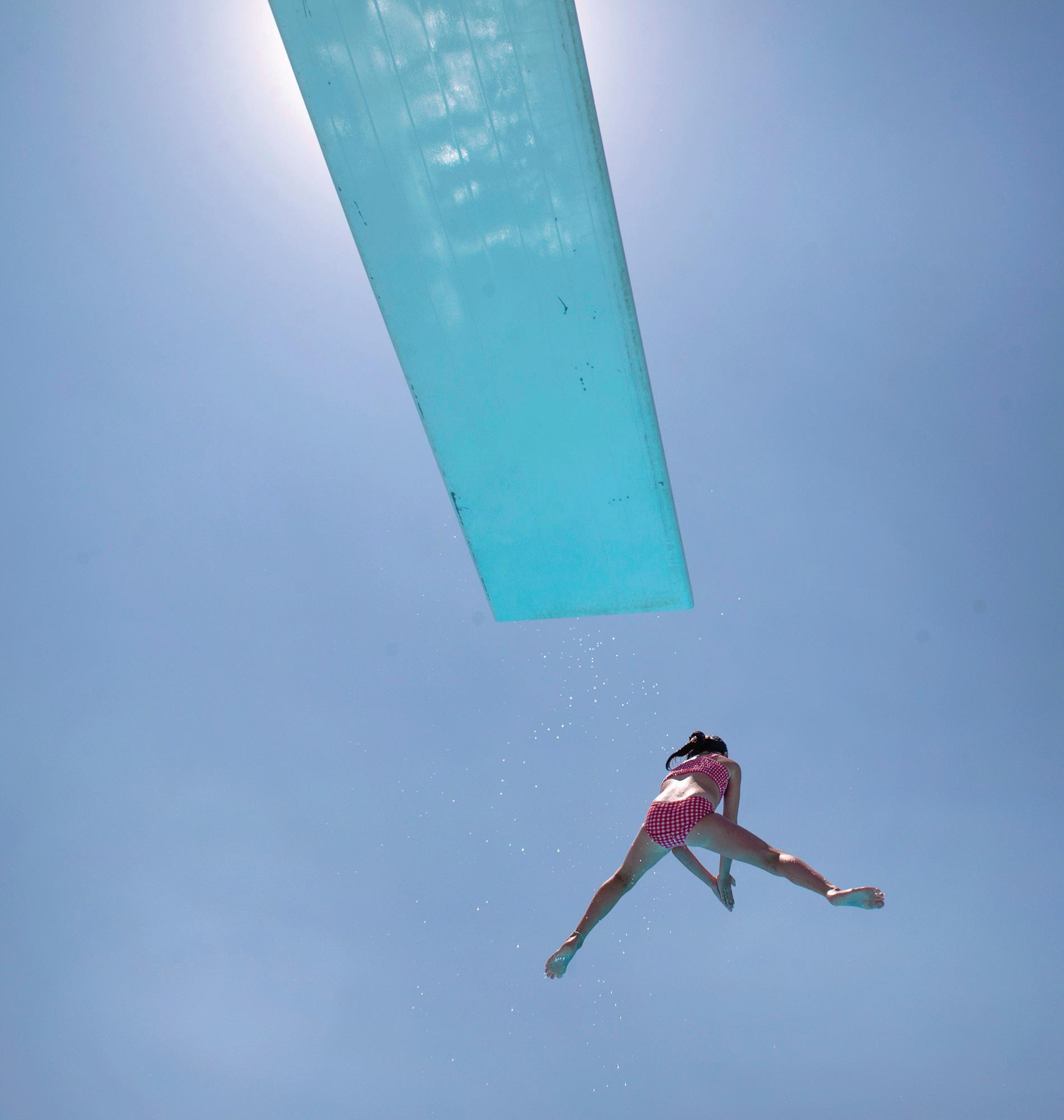
I often admonished my photojournalism students.
“Show me what it feels like.”
That was a common theme in all of my classes, and it remains sound advice for anybody using photography to communicate. If you want to reach people with your photographs, aim high. Those images connect us and make us smile or remember.
Consider what is in the frame when you press the shutter. Being patient and watching for storytelling moments is critical. The act of fishing might not be nearly
as storytelling as the reaction of the angler once the fish is caught.
Conversely, an overall scene of a fisherman in a beautiful stream might best evoke the serenity of the moment. Sometimes the liberal use of negative space—that which is not occupied by people or objects—helps humble us and wrap us in wonder.
Finally, consider the angle from which you photograph. A child’s perspective is different than an adult’s, and subtly helps take us back to those long, carefree summer days. n
See if you can make a photograph that captures the joy or the essence of summer. Reach into your memory bank and consider what you loved most about summers. Chances are the places and activities that brought you joy in the past—lakes, campgrounds, fishing villages or swimming pools—will lead you to where you find the best pictures today.
Email your best image (just one, please) with caption information, including an explanation of how it affects you, to GPH@pur.coop. We may share submissions on our website and social media channels.














































By Victoria Hampton
Advancements in technology have increased efficiency and lowered energy use for many home appliances. While smart thermostats and refrigerators are common home upgrades that help people save on electricity bills, one of the most efficient upgrades homeowners can make is to an appliance many haven’t touched in months—the water heater.
A standard electric water heater accounts for nearly 20% of the energy use in a home, which is more than a refrigerator, clothes washer and dryer combined, says Bonneville Power Administration Program Manager David Murphy.
Learn about the technology and potential energy savings for switching to an energy-efficient heat pump water heater.
Heat pump water heaters can save up to $450 a year, or $4,500 over the system’s lifetime, David says. Savings are dependent on each home’s utility rates and hot water use. Systems come with a 10-year warranty.
David says heat pump water heaters can provide more hot water than similarly sized standard systems. Many tanks also have leak detection that can warn homeowners if an issue arises.
Systems have several automated settings, including maximum hot water generation when guests stay the night, high-efficiency eco mode and advanced vacation mode settings, allowing homeowners to program their return—so they come home to hot water.
“Automation, like many things we see in the technology realm, increases control of your settings,” David says. “[You]
get the benefits you need while still using less energy.”
Although the upfront cost of a heat pump water heater is typically more than a standard system, homeowners can save with rebates and incentives. Electric utilities can provide information on available savings for heat pump water heater upgrades.
“Always talk to your local utility to see what they have available,” David says.
Heat Pump Efficiency
Think of a heat pump water heater as a refrigerator in reverse. A refrigerator pulls heat from inside the box and sends it outside the appliance. A heat pump water heater pulls heat from the surrounding air.
“It is a unit driven by a compressor that harvests heat from the air and puts it into your water tank,” David says.
What is the importance of this state-of-the-art heat pump technology? It uses about one-third of the energy of a standard electric water heater. This increased efficiency can lead to lower electric bills.
Heat pump water heaters are ideal for garage and basement placement. When installing in a closet, consider the compressor noise and cold air released when it is running. The compressor can also be vented outside.
Pulling heat from the air creates moisture. Each system has a condensate line pipe—a plastic tube using gravity to draw out excess condensation from the unit. This feature does require a small amount of space near the heat pump water heater for the condensate removal pump or drain piping to the outside of the house.
Also, as with any water heater, homeowners should choose a tank size that matches the number of people in the home. Tanks vary in price.
Heat pump water heaters add a few more simple tasks to your quarterly home maintenance check. When changing the HVAC air filter every three months, clean the heat pump water heater filter as well. Use a vacuum or rinse it with water to remove any debris.
Check the condensate line pipe for clogs and dirt when cleaning the filter. The line can be cleaned with a brush or rag.
When it is time to upgrade the household water heater, make the switch to an efficient, energy-saving heat pump water heater.
Watch a video about how to use and maintain a heat pump water heater at comfortreadyhome.com/guides/ hpwh-user-guide
By Leslie Tate
A ductless air conditioner, also called a mini-split system or air-source heat pump, offers a variety of options for heating and cooling, particularly for older homes and buildings.
A mini-split system can provide several benefits, but the most attractive feature is the capability to regulate temperatures in specific rooms or areas of the home.
An indoor air-handling unit, or evaporator, and an outdoor compressor/condenser comprise the two major components of a mini-split system. In many ways, mini-split air conditioners operate like conventional air-conditioning systems. In cooling mode, the system transfers heat from inside the home to the outside. With a central air system, cold air is blasted throughout all the ducts in the house from a single air handler, such as a large fan in an attic or basement. Because a mini-split can blow air from up to six independent air handlers, it can regulate temperatures for different rooms or areas inside a home or business.
Mini-splits are a viable alternative to duct systems for home additions or homes where a duct system may not be practical. When a duct system is too expensive to install, a mini-split system can efficiently heat and cool a space while keeping installation costs down.
Compared to conventional heating, ventilation and air-conditioning systems, minisplits can save up to 30% on cooling costs and 50% on heating costs. Additionally, inverter technology, which enables variable-speed operation in most mini-split systems, increases energy efficiency and is cheaper to operate.
In addition to greater control over heating and cooling, mini-splits can often be managed with a mobile app, smart thermostat or remote control. They provide better air quality, and homeowners can easily replace filters themselves and save on duct cleanings needed for conventional systems. Reheat dehumidification is a common feature of minisplit systems to maintain a steady room temperature while lowering humidity.
A few factors should be considered before installing a mini-split system. Determine the right size and quantity of units. Mini-split placement should consider how to best distribute air throughout the home or business. A qualified contractor can offer advice on these factors. Additionally, your home should be properly air sealed for the minisplit system to operate efficiently.
For many homeowners, a mini-split ductless heating and cooling system can be a fantastic alternative for heating and cooling. Contact your local electric utility if you have questions about mini-split systems.

All ages can find something new and exciting around every corner of the state. Filled with rich history, abundant natural beauty and diverse events all year, Florida has something fun for everyone.
July 1-3
Space and Rockets Summer Camp
Travel to the galaxy at Space and Rockets Summer Camp. Campers learn about our place in the universe as they design and launch their own waterpowered rocket. Experience is not required, but the laws of motion are. Register online.

https://www.edisonfordwinterestates.org/education/camps; 239-334-7419
July 3
Freedom Rocks! Fireworks
Come early and dine at any Freedom Rocks participating waterfront restaurants rock a spot with the glorious sunset washed colors painting the skies above the Grand Lagoon Bridge or bring your chair/blanket to the grassy lawn at Treasure Island Marina. Come early and shop, dine and have fun.
www.panamacitybeach.com; 850-233-5070
July 3-7
The Key Lime Festival
Key West’s annual Key Lime Festival celebrates the world’s most sensational citrus with an array of festivities across the island where Key lime pie was conceived. Over five days, lovers of the lime can indulge in a full menu of activities including a gravity-defying Key lime pie drop competition from the top of the Key West Lighthouse, brunches and dinners, and the world famous Key lime pie eating championship.
www.keylimefestival.com

July 6
Salt Air Farmers Market
Treat your family to art pieces and fresh veggies, sweet tupelo honey and vine-ripened fruit from local farmers and artisans. This market is open 9 a.m. to 1 p.m. the first and third Saturdays.
http://saltairmarket.com; 404-906-2637

July 6
Flora-Bama Freedom Run
This annual run features two courses: The 4-Mile Run/Walk Course or the 1-Mile Fun Run/Walk. From ribbons and bows to flags, socks & T-shirts, break out your best red, white and blue attire.
https://florabama.com/freedom-run; 850-492-0611



July 6
History Tour at Camp Helen
Join park ranger staff for a guided history tour of the grounds at Camp Helen. Follow along as staff share park history from the Hicks family building the historic structures that still stand on the grounds, all the way through the colorful history of Avondale Textile Mill’s use of the property for its employee summer retreat. Dress appropriately for the weather, and bring water and insect repellent.
https://floridastateparks.org/events/history-tour-camp-helen-3; 850-245-2157


July 11
All About Sea Turtles
Why do sea turtles cry salt? How long do they really live? Where do they lay their eggs? Get the answers to these questions and any others you may have during this indoor presentation all about sea turtles. Florida Coastal Conservancy Director Jessica Swindall will lead the presentation and pass around interesting items such as shells, skulls and more. https://floridastateparks.org/events/all-about-sea-turtles-7; 850-245-2157
July 12
Blue Beachside Bazaar
The Pensacola Beach Chamber is delighted to offer attendees of the Red, White & Blues Pensacola Beach Airshow the opportunity to visit the Blue Beachside Bazaar. Ten vendors will be set up at show center. www.visitpensacolabeach.com; 850-932-1500
July 14-16
12th Annual VFW Fishing Tournament
Cash prizes will be awarded for the heaviest catch of five target species—mahi-mahi (dolphinfish), wahoo, tuna, snapper and grouper, with a first-place prize of $5,000 for the heaviest mahi-mahi. Anglers fish in seven divisions: pee-wee, junior, lady, first responder, veteran, senior and active duty. Captains and anglers can choose to fish either Saturday or Sunday, or both if they register separately for each day. All proceeds benefit veterans with disabilities of Monroe County.
https://vfw3911.org/di/vfw/v2/default.asp?pid=143668; 305-294-9968


July 16
Library Concert
Join us for an afternoon of music at the Pensacola library. Local singers present favorite arias and musical theater tunes for a free concert for the whole family. Performing artists include soprano Sheila Dunn, soprano Bizhou Chang, baritone Jack Chandler and pianist Cody Martin. www.pensacolaopera.com/event/library-concert; 850-433-6737
July 17-21
Hemingway Days
Ernest Hemingway look-alikes, writers, anglers and fans gather for the annual Hemingway Days celebration. The festival honors the legacy of the American literary giant who lived and wrote on the island for most of the 1930s. Events include the legendary Hemingway Look-Alike Contest, the wacky Running of the Bulls, presentations, prose and poetry readings, a commemoration of the 125th anniversary of Hemingway’s July 21 birth, a museum exhibit, a 5K run and paddleboard race, and a street fair. https://fla-keys.com/hemingway-days; 800-352-5397
July 20

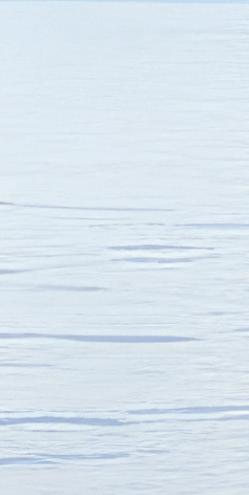

The Owls of Florida
Although they are birds of prey, owls are not related to other raptors such as hawks, and the evolution of the owl group is something of a mystery. Learn all about our local owls, including how they hunt, what they eat, their unique sensory organs and their peculiar behaviors. You’ll want to glove up toward the end of this session when we explore owl “pellets.” www.visitgulf.com

Want to share a family-friendly event with the readers of Florida Currents? Head online and enter the details at tinyurl.com/FloridaCurrents. Make sure to submit the item at least 60 days before the event (due to press deadline). If you own rights to a print-quality photo promoting your event, include it with photo credit information.

Even during the oppressive heat of summer, your Florida landscape can be home to a variety of bedding plants.
Before you jump into planting, think about the specific growing conditions in your landscape. For example, consider how much sun or shade your yard receives and how well-drained the site might be. Those with coastal landscapes should look for plants that can tolerate high winds and at least some level of salt—be it from sea spray or irrigation from wells that contain high levels of salt.
After you’ve considered your site’s conditions, think about colors and forms of the plants. Limit the varieties and colors you choose to create a cohesive look and prevent visual confusion.
Annuals are plants that last one season, and there are lots of warm-season annuals that can bring color into your garden as the temperature rises. Gardeners love using annuals in the landscape because they allow them to change out plants and try new configurations year after year.
If you like plants with cool-colored blooms, try torenia—also known as the wishbone flower. This plant does well in the shade or the sun. Flowers can be white, yellow, pink, violet or purple, depending on the cultivar.
For eye-catching color, try the cora and nirvana series vincas. They have big flowers and are resistant to heat, drought and pests.
Zinnias have long-lasting flowers ideal for a cutting garden. This heat-loving flower comes in many colors.
If you’re looking for standout foliage, coleus and caladiums add nonstop summer color to your sun or shade garden.
Perennials
When other plants are fading in the heat, perennials such as Pentas lanceolata truly shine. These attractive plants produce red, pink or white flowers throughout the summer, and are a great source of food for hummingbirds and butterflies.
Scarlet salvia is a native of the Southeast. Its red flowers attract butterflies and hummingbirds. This Florida-friendly perennial looks especially attractive as a border or in mass plantings.
Lantana exhibits outstanding heat tolerance and can stand up to wind and salt as well, making it a good choice for people who live near the coast. Nectar-laden blossoms make it a natural choice for butterfly gardens. That said, many species are highly invasive, so choose lantanas safe for your landscape.

Melampodium is a tough, drought-tolerant plant that produces a mound of small yellow flowers throughout the summer. Several varieties are available, such as the compact million gold, lemon delight and derby. These varieties top out at about 10 inches.
Showstar and medallion are taller varieties that reach 24 to 36 inches tall. Melampodium is impressively resistant to disease and insects. It is self-cleaning, so deadheading—removing old blooms— is not needed.
Make sure you select healthy plants to start. Look for unblemished leaves, good green color and lots of flower buds.
Once you select the right plants for your area, make sure you start out with a properly prepared planting bed. For best results, clear a section of your landscape for the bed by removing grass and weeds. A few weeks before you plant, till at least 6 inches down and add organic matter—such as compost—to enrich the soil.
Fertilize your flower beds before you plant or at planting time with a controlled-release complete fertilizer.
Before taking the plants out of the containers, water the pots, then gently loosen and spread the roots out. Once they are in the ground, add mulch to help retain moisture and keep weeds down.
A border around your planting bed helps keep your grass from invading the area.
Many annuals, such as marigolds, coleus and annual salvia, require deadheading to keep them blooming and looking neat.
Others, such as vinca, wax begonias, portulaca and impatiens, continue to flower without removing spent blooms. Tender annuals are damaged by cold weather, so you can leave them in your landscape until the first frost or freeze, or you can pull them out and replace them with hardier cool-season annuals to give your landscape some winter color. n

Natasha Atlas graduated from the University of Florida’s Agricultural Education and Communication Program in 2021. She loves writing about unique and new varieties of flowers and plants for the Neighborhood Gardener Newsletter and its 10,000 subscribers. When she isn’t writing, she enjoys tending her own garden on her balcony.
By Claire Thomas
At Peace River Electric Cooperative, our lineworkers are the heart and soul of our operations. These dedicated individuals work tirelessly, often in challenging conditions, to ensure our communities have reliable electricity. A celebration was recently held in their honor to show appreciation for their hard work and commitment.
The event featured a low country boil at the Wauchula Operations Center. The aroma of shrimp, sausage and corn filled the air, as crews gathered under the oaks for good food and

fellowship. The event allowed everyone to relax, bond and enjoy some downtime together.
In addition to the feast, we couldn’t let the day pass without a little competition. It was great to see our lineworkers show off their skills in a friendly game of cornhole.
This event was a small token to express gratitude for our crews that brave all kinds of weather and work tirelessly to maintain and restore power. Their dedication and hard work ensure our community remains safe, comfortable and connected.
We are incredibly proud of our lineworkers and all they do for Peace River Electric Cooperative. Thank you for all you do.




Before you leave for vacation, reduce energy waste and wear and tear on your home’s equipment by following these energy-saving tips.
PHOTO BY MARK GILLILAND/PIONEER UTILITY RESOURCES



By Miranda Boutelle
Q: How can I lower my electric bill when I’m gone on vacation?
A: Just like you, the equipment in your home is hard at work getting through the daily grind. While you are off enjoying a new adventure or time away, give your home’s equipment a vacation, too. Doing so can reduce unnecessary energy waste and unneeded wear and tear on your heating and cooling system, appliances and more. Here’s how to set your home to vacay mode. Your heating and cooling system keeps you comfortable. If you aren’t there, it doesn’t need to be quite so comfortable in your home. Setting the thermostat closer to the outdoor temperature can save you energy and money. I don’t recommend completely turning off the heating or cooling system. In extreme weather, your heating and cooling system also helps protect your home from freezing pipes or damage from excessive heat.
balance for your house.
Installing a smart thermostat that has a corresponding phone app gives you the ability to control your settings remotely. You can adjust the temperature after you leave home and right before you return.
Most water heaters have a vacation mode setting. This setting drops the temperature to reduce wasted energy when you are not home. A storage water heater is like an insulated tea kettle, ready to provide hot water whenever you need it. Give that water heater a vacation, too. Changing the setting to vacation mode keeps it on at a lower setting, saving energy. Leave yourself a reminder note to turn it back on when you get home, so you don’t wind up with a disappointing shower before the first day back at work.


As a rule, you can typically set your thermostat 5 to 10 degrees closer to the outdoor temperature when you aren’t home. Each home is different, and the weather varies depending on where you live. Consider the right temperature
Closing the curtains can have two benefits. It can keep heat from the sun or the cold at bay. This reduces the load on your heating and cooling system, which saves energy. It also blocks visibility into your home when you’re away.
For security, some people use timers or leave on exterior lights. Make sure any lights left on are LEDs, instead of incandescents or compact fluorescents. LEDs use less energy and have less impact
on your electric use when left on all night. Also consider adding smart LEDs to your home, which can be controlled remotely through an app on your phone.
Did you know there are devices in your home that continue to draw power from your electric outlets even when turned off or on standby? Before you leave, walk through your home and unplug devices and appliances. Make sure gaming devices and computers are fully powered down. Unplugging any devices that have lights, clocks or use standby mode can also reduce wasted energy.


Having peace of mind that your home is powered down and secure can help you enjoy your vacation. After all, we all need an occasional break.

Miranda Boutelle has more than 20 years of experience helping people save energy. She has worked on energyefficiency projects from the Midwest to the West Coast. Today, Miranda is chief operating officer at Efficiency Services Group in Oregon, a cooperatively owned energy-efficiency company.



Among the oldest, simplest and still most effective techniques for catching many saltwater species, a popping-cork rig can put redfish, speckled trout, sheepshead, flounder and other fish in the boat quickly.
In brackish areas, anglers might also catch largemouth bass.
A popping-cork rig essentially consists of a float holding up an enticement. Some corks somewhat resemble an old topwater popper. When jerked, the concave shape gurgles the water, simulating a fish striking prey on the surface.
Other corks take a more traditional round or oblong shape but slide up and down a wire stem to create the same type of commotion.
Attach a float directly to the line—18 to 36 inches above a hook, depending upon the depth. For added casting heft, attach a small, split-shot sinker to the line between the hook and the cork.
Some companies sell pre-rigged packages that come equipped with a cork, leader, weight, rattles, and plastic or metal beads that create additional noise and vibration.
Cast to a likely spot and let it sit for a
few moments. Periodically, jerk the rod to make the cork pop the surface. When the cork goes down, set the hook.
With popping corks, most anglers use live shrimp for bait. Hook a shrimp under the horn. Carefully avoid hitting the black spot in its head, which could kill it. Alternatively, try hooking the shrimp through the meaty part just above its tail.
Other live or cut baits also work, depending upon what anglers want to catch. Some people use live minnows, small mullets, croakers, menhaden and fish chunks. For redfish and black drum, use small whole blue crabs or crab pieces.
Various artificial temptations can also work, such as soft-plastic shrimp or minnow imitations or flies.
With artificial baits, pop the cork more frequently. When spooked, a live shrimp naturally flicks its tail to escape and rises to the surface. When an angler pops a cork dangling a plastic shrimp, the lure flies upward and then sinks again, exactly like a live shrimp.
Fish hear the commotion and think one of their cousins took a shot at a shrimp and missed. Then, they see the morsel
sinking and dash in to grab it before another fish eats it.
Popping corks generally work best in shallow water. Set the depth so the bait hangs just above the bottom. Cast so the corks drift along weedy shorelines or over oyster reefs and other structures. Let the wind or tide carry the cork along naturally.
Many fish gather on the downstream side of points. They look into the flow waiting to ambush anything rounding the point. Toss the rig so the prevailing wind or tidal flow carries the cork across the point.
During a falling tide, fish often congregate at the mouths of tiny drains. Throw the cork as far as possible upstream in any marshy drain. Let the current carry the temptation downstream naturally. Pop the cork occasionally. In the right spot, action can come fast. n

John N. Felsher is a freelance writer, broadcaster, photographer and editor. He’s written more than 3,500 articles on a wide variety of outdoor topics. Contact him at j.felsher@hotmail.com or through Facebook.
Every year, workers along the sides of roads are injured or killed when vehicles crash into worksites despite being marked with bright cones and warning signs.
There is an easy way to reduce those incidents that harm police officers, other first responders, road construction workers and utility crews. There is a slogan to help remind drivers: “Slow down or move over.” It is good advice and a decent thing to do to keep people safe. It is also the law in all 50 states.
Florida law requires you to move over a lane when you can safely do so for stopped law enforcement, emergency, sanitation, utility service vehicles or tow trucks.
In January, disabled vehicles along the side of the road displaying hazard lights emergency flares or emergency signage were added to the law.
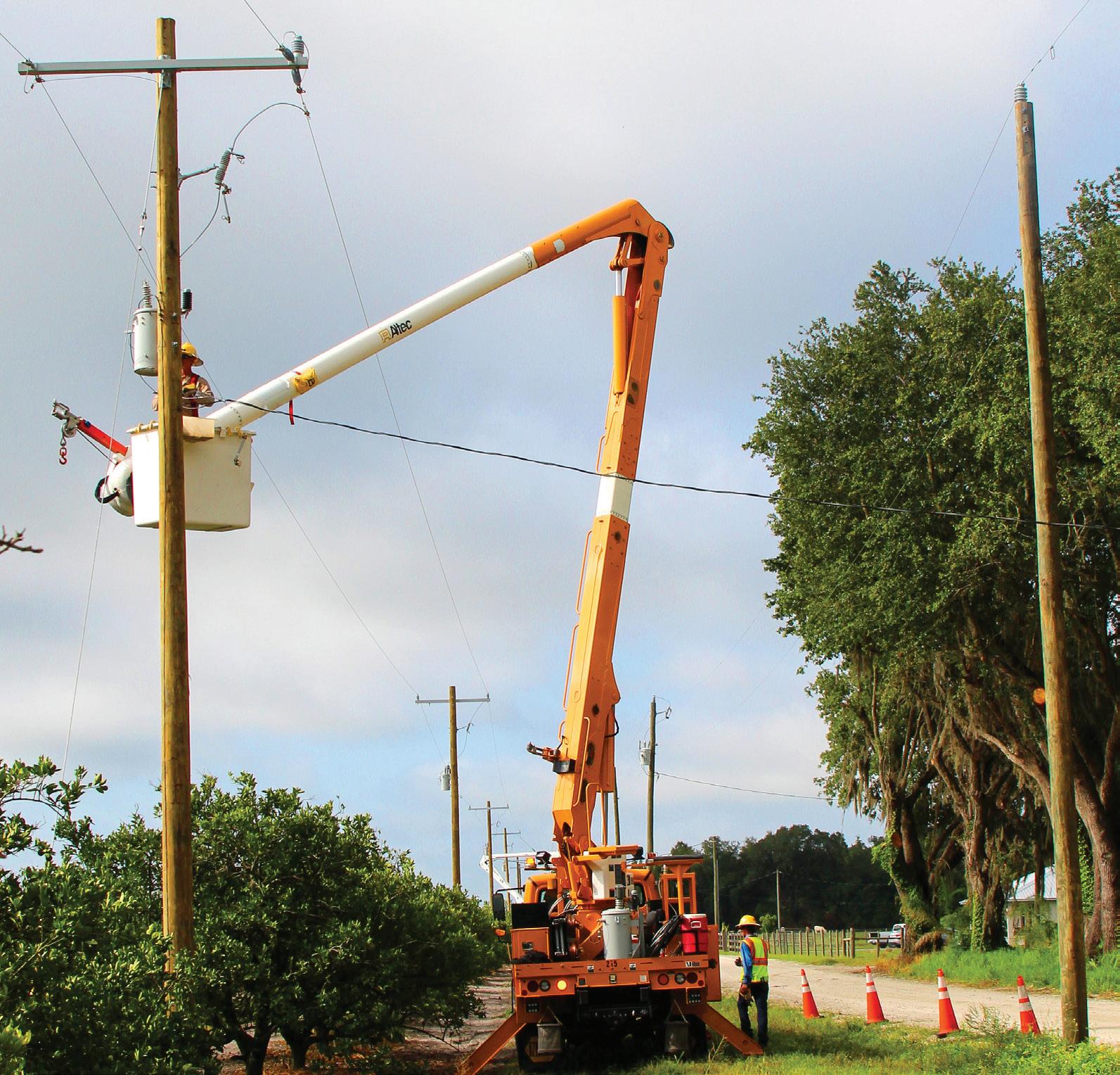
When PRECO crews are working next to roadways, please follow the law and move over.
If you can’t move over—or when on a two-lane road— reduce speed to 20 mph less than the posted speed limit. Slow down to 5 mph when the posted speed limit is 20 mph or less.
AAA reports indicate that between 2016-2020, an average of 350 people were fatally
struck each year while standing near a disabled vehicle. On average, two emergency workers are struck and killed every month by a driver who fails to move over, according to the Bureau of Labor Statistics.
“These heroes put their lives on the line every time they rescue someone on the
roadside,” says Mark Jenkins, public relations manager for AAA. “We ask that drivers minimize distractions and constantly pay attention to the road ahead of you. Doing so could save lives.”
Violating the Move Over law results in a fine, fees and points on your driving record. n




Please let us know

If you see a burned-out or damaged light on Peace River Electric Cooperative’s lines, please report it online at PRECO.coop, through our SmartHub mobile app or by calling 800-282-3824.

Please provide:
·A description of the problem
·The location of the streetlight or outdoor light
·The pole number where the light is attached
·Your name, account number and contact information
Thank you for helping keep our streets and neighborhoods illuminated at night. . . . . .



Florida’s geography is vast and beautiful, from lakes to oceans and parks to beaches. Some of you have views from your homes that rival the views of national parks.
From time to time, we share some of readers’ photos in this space. If we use your photo here, we will send your choice of a $25 gift card to REI or Amazon.
To submit your photo, email a JPEG file to photos@floridacurrents.com. Include “Before You Go” in the subject line. Please share a bit about what inspired you to make your photo.
A lizard rests on a leaf in Sonya Casasnovas’ garden in Parrish. At one point, the lizard stopped to look her in the eye. By the expression, Sonya believes it was a bit annoyed. PHOTO BY
SONYA CASASNOVAS


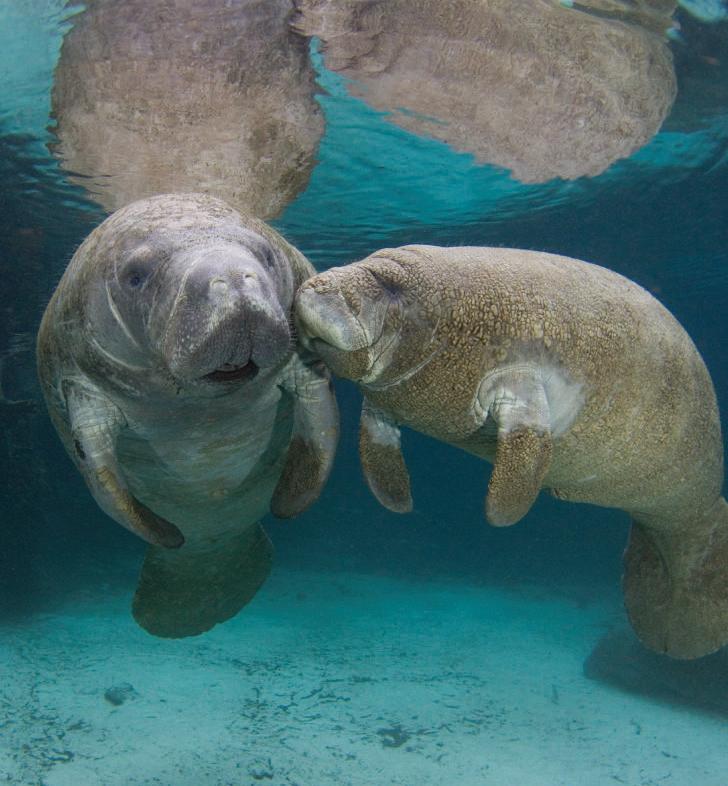
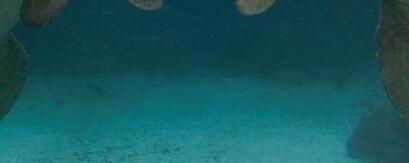



Save the planet without leaving the house.
Going solar at home helps reduce pollution and carbon emissions in your city and around the world. And it’s easier and more affordable to do than ever before—that’s why every four minutes another American household or business goes solar. Find out how you can be next.
PRECO.coop
800-282-3824
to report a power outage
Use the SmartHub app.
Text OUT to 800-282-3824.
Call 800-282-3824.
corporate headquarters
210 Metheny Road Wauchula, FL 33873
manatee service center
14505 Arbor Green Trail
Lakewood Ranch, FL 34202
board of directors
District 1
LEONARD CRAWLEY
District 2
KENNETH ODEN
District 3
BRUCE VICKERS
District 4
HOLLIS ALBRITTON
District 5
MARIE DASHER
District 6
JOHN MARTIN
District 7
CHRIS PORTALE
District 8
ELLEN BACHMAN
District 9
WILLIE DAWES
board meetings
July 23
August 27
September 24
Any PRECO member may attend board meetings. Due to building security requirements and to facilitate attendance, members should contact the cooperative in a timely manner for logistical information regarding meetings.
online e-zine
Prefer to receive Florida Currents online?
Sign up through your online account or call us at 800-282-3824
Have you ever received a call from an unknown number? Or maybe an email from someone not in your contact list? More than likely, it could be a scam.
Scammers are more sophisticated than ever, and they understand our increasing reliance on technology. With their sharpened digital knives, scammers have adapted their tactics to trick unsuspecting consumers through various methods.
Peace River Electric Cooperative wants to help you avoid energy scams. Here are some tips to help you stay safe from even the craftiest scammers.
Recent Utility Scams. Scammers typically disguise themselves—physically or digitally–as utility employees or representatives to steal consumers’ money or personal information. A common trick is to claim a consumer’s bill is past due and threaten to disconnect service if payment isn’t received immediately. Scammers approach consumers through various means, including phone calls, text messages, emails and even in-person visits.
New capabilities disguising caller ID or “spoofing” can make the phone number you see on caller ID appear to be from a trusted source. Spoofing makes it easier for scammers to deceive you because it’s more difficult to verify the call immediately. Another recent scam uses fraudulent websites identical to a utility payment webpage. What’s worse, these pages are often promoted on search engines to trick consumers into clicking and making a payment.
If you receive a message claiming you overpaid your electric bill and are due a refund, don’t fall for it. It’s likely a scam aimed at stealing your personal information.
Spotting a Scam. Scammers often use high-pressure tactics to create a sense of urgency, such as claiming your electricity or other services will be disconnected if payment isn’t made immediately. Additionally, scammers may ask for unusual payment methods, such as gift cards or cryptocurrency. If someone pushes for an unusual payment method, it’s likely a scam.
You’ve probably noticed many digital scams, such as emails or text messages, include poor grammar, spelling errors and odd email addresses. These are red flags. When you see these risky forms of communication, consider it a potential scam.
What PRECO Will (and Won’t) Do. PRECO will never demand an instant, immediate payment and threaten to disconnect your service without prior notices or warnings. We strive to resolve challenging situations and work with our members to avoid disconnects.
The co-op will never ask for your Social Security number or banking details over the phone or through email. We offer several secure payment options, including at the PRECO office and through PRECO.coop, scheduled payments or SmartHub.
Avoiding Scams. Whether in person, over the phone or online, always be suspicious of an unknown individual claiming to be a PRECO employee requesting banking or other personal information. We only send you text messages if you have opted for important alerts and outage updates from SmartHub. If you’re ever in doubt about a potential energy scam, call us at 800-282-3824 so we can assist.
PRECO wants to help protect you and our community against utility frauds, and by notifying us about potential scams, you can create the first line of defense. We encourage you to report any possible scams so we can spread the word and prevent others in our community from falling victim.